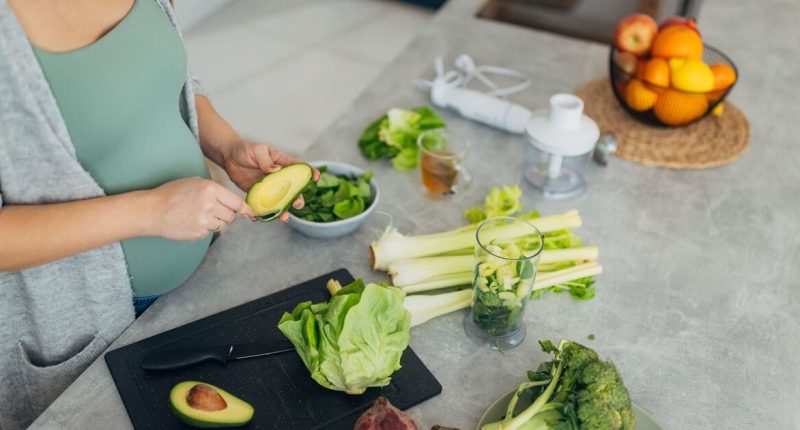Share this @internewscast.com
Forgetting a simple but crucial step in the kitchen could increase your risk of contacting a grim bacterial infection.
Experts have warned that approximately 17% of individuals in the UK fail to wash their leafy greens before eating them. And while some suppliers do wash their produce before packaging, this is not always the case.
As a result, there is a heightened likelihood of raw fruit and vegetables harbouring hazardous germs such as listeria, salmonella, and E.coli on their surface, which can lead to severe illness and, in rare instances, even fatalities. The Foods Standard Agency stresses that pathogens on food are invisible to the naked eye, making it impossible to determine the safety of a food item solely by appearance.
Dr Deborah Lee, a UK-based GP turned medical writer, told MailOnline: “Salad leaves are a common source of pathogens, including norovirus, Hepatitis A, cryptosporidium, giardia, toxoplasma, salmonella, E.coli, campylobacter, yersinia and listeria.
“They can become contaminated at every step of the production process, from contact with soil, water, handling, equipment or storage. The NHS recommends rewashing all prewashed salads and vegetables before use. This is a vital step in food preparation to help reduce gastroenteritis (food poisoning).
“Prewashed salad is washed with chlorine as a disinfectant, then rinsed with pure water. Although this kills over 90% of bacteria, many remain.”
How to appropriately wash fruit and vegetables before eating
Official guidance states that all fruit and vegetables should be washed before they are eaten. It is especially important that you ensure all dirt and other debris is effectively washed off by placing the food under running water and rubbing it clean under water.
This is because even the smallest bit of dirt can carry harmful bacteria which can lead to food poisoning. You should also ensure that your hands are thoroughly washed before and after handling he food and use different chopping boards and utensils for raw and ready-to-eat foods.
It is crucial to not only wash away visible dirt but also to reduce the risk of foodborne illness, as even minuscule amounts of soil can harbour hazardous bacteria that could cause food poisoning. To properly wash produce, run it under water while scrubbing gently.
Symptoms of food poisoning
The NHS notes that food poisoning is rarely serious and symptoms tend to get better within a week. If you do suffer from food poisoning, you may experience one or more of the following symptoms:
- a high temperature
- diarrhoea
- feeling sick or being sick
- feeling generally unwell
- tummy pain
While it is generally advised to treat food poisoning at home with plenty of rest, fluids, and paracetemol for discomfort, you should seek medical attention if you:
- vomit blood or have vomit that looks like ground coffee
- may have swallowed something poisonous
- have green vomit (adults)
- are having severe difficulty breathing, or taking lots of quick, short breaths
- have blue, grey, pale or blotchy skin, lips or tongue – on brown or black skin this may be easier to see on the palms of the hands or soles of the feet
- have a sudden, severe tummy ache
- have a sudden, severe headache
- have yellow-green or green vomit (children)
- are confused or not responding as usual
- have a stiff neck and pain when looking at bright lights















